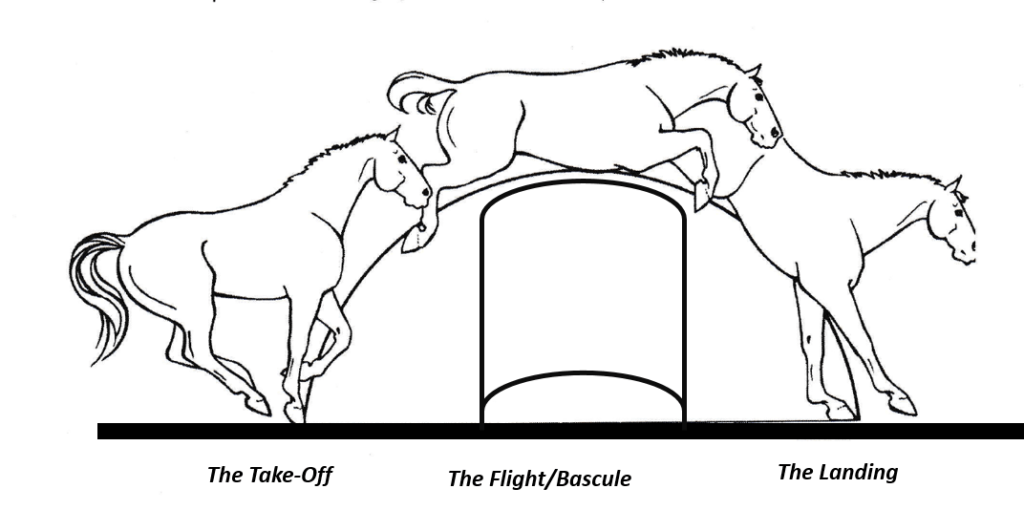Back to: English Rider 5

There are five phases to a horse’s jumping effort:
To understand how to achieve a better result without worrying about seeing strides, it’s helpful to break down jumping into the five phases of jumping: the approach, takeoff, in the air, landing, and getaway. You need to keep uppermost in your mind that all jumping revolves around two qualities: line and pace. This is assuming that all jumps will be taken from the canter. The word “pace” will describe the speed and quality of the canter. Let’s look more closely at the phases of jumping.
The Approach
The approach is instrumental in performing a quality jump from the trot or the canter. It is while approaching the jump that the rider should be influencing the horse the most-rhythm and pace, the horse’s balance, and straightness.
If the rider is able to keep the horse going actively forward, balanced, and straight, the horse/rider will usually find an appropriate take-off distance to the jump.
The rider must remember to maintain leg, especially at the base of the jump.
Note: Horse’s shoulders/hip and rider’s shoulders/hips are perpendicular to the jump.

The Take-Off
The horse should rock back and then, flexing his hocks, push off the ground. The front end of the horse leaves the ground first, propelled by the hind end. The rider must maintain the leg, assume the two-point position, provide the appropriate release, and stay in balance with the horse.
The Flight
The flight is the period during which the horse is not in contact with the ground. It is characterized by three distinctive phases:
- Ascent: The horse goes up towards the obstacle.
- Flight/Bascule: The horse is now over the jump. The bascule refers to the natural round arc that a horse’s body takes as he goes over a jump. The horse should rise up through his back, stretch his neck forward and down when he reaches the peak of the jump.
- Descent: The horse goes down towards the ground.
The rider must maintain the correct position – eyes up and heels down – and continue to stay in balance with the horse.

The Landing
The horse then begins his landing – as the front feet touch the ground, the head and neck are raised and the rider’s upper body moves back to its normal position. Care must be taken not to take back the contact with the reins or to come back to the saddle too quickly. The horse’s hind legs should make contact with the ground before the rider resumes their normal position.
The Recovery
The horse has landed and the rider must organize and take back contact with the horse’s mouth’ The rider must re-balance the horse and focus on the next line for the next jump. This stride is important since it starts the process of setting up for the next fence or finishing the course with a circle.